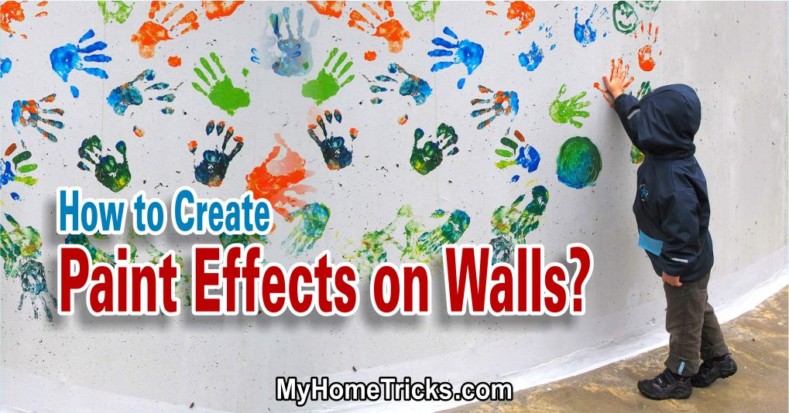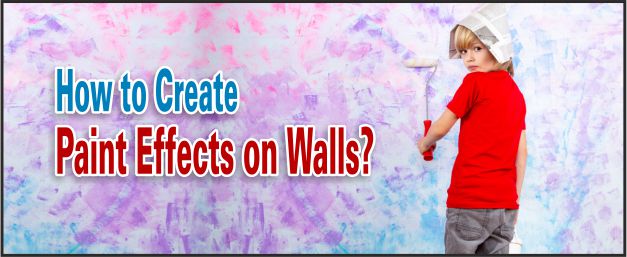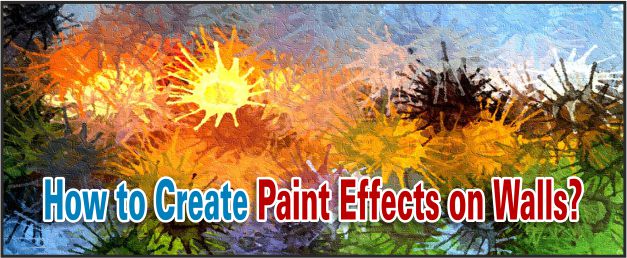Paint Effects
How to Create Paint Effects on Walls Interiors? Considering Options… Simple paint effects for walls and interiors can have just as much simple effect that uses colored emulsions. Your impact as those involving more complex can mix colored glazes and attempt more techniques. If you are a beginner on paint effects, choose an extravagant finish as you gain experience.
Choosing Paint Effects
- Selecting methods: There are two main methods of creating paint effects. Either a tool is dipped into paint or glaze and then applied to a wall, or a glaze is applied to a wall with a brush, and a tool is pressed into the glaze. The former is an “on” technique; the latter is “off.” Even if you use the same glaze and the same tool, a different finish will be achieved depending on which method you employ.
- Applying a base coat: Always apply a base coat. Light shades are best since you can then build up color: semigloss or latex are ideal.
Paint Effects: Preparing to Paint
- Roughing it: Examine walls for paint effects carefully. Rough, textured walls are ideal for sponging, which disguises defects, while smooth, completely flat walls will show stippling off to their best.
- Assessing suitability: Choose ragging and dagging rather than rag rolling on a wall that has pipework or switches. Hag rolling needs constant motion without frequent interruptions. Joins are difficult to disguise.
- Getting ready: Make sure that all materials and tools are ready for use since once you start a wall, you should finish it without interruption. If you do not, some areas will dry before others, and the joins will show.
Types of Paint Effects
Whichever paint effects you choose, make sure that you have all tools and materials at hand. Try to maintain consistent hand movements from one wall to another for an even overall finish.
Sponging on
Sponging is probably the easiest paint effects to create. Latex paints or glazes can be used. Natural sea sponges are the ideal tools to work with, although synthetic sponges can be substituted.
Sponging off
A mixed glaze should be used for these paint effects. A sea sponge must be used since substitutes tend to smudge the finish. This is a natural progression from sponging on in terms of difficulty.
Ragging
Ragging involves a similar technique to that of sponging, except a crumpled, lint-free cloth is used instead of a sponge. A mixed glaze should be used for the best results.
Bagging
Bagging involves the same technique as ragging, except a plastic bag, is used instead of a rag. This creates a more sharply defined texture compared to the fabric alternatives used in ragging.
Rag rolling
Rag rolling involves rolling a twisted rag down a wall to create a repeating pattern. It is best to rag roll off since uniformity and consistency are difficult to achieve when applying it.
Stippling
A stippled effect is created by pressing the bristle tips of a stippling brush into a wet glaze. The technique is only suitable for glazes, and continuity is important to prevent joins or overlaps.
Color-washing
Color-washing is probably the oldest paint-effect technique. Use a large paintbrush to apply a highly diluted glaze to wall surfaces. This will produce a translucent finish through which the base coat shows, creating depth and texture.
- Stabilizing a wash: A wash should have the consistency of highly diluted paint. To prevent it from running off the walls, add a small amount of PVA glue to the mix to help it adhere to the wall.
- Adding depth: Apply several coats and vary color slightly to create a wonderful feeling of depth. Warm colors will give a glow to any room.
- Choosing walls: Apply a wash to a rough surface to create texture. The color will clear from the peaks but build up in the troughs, creating a great textured finish.
.
Additional Paint Effects Equipment
Building up a paint effects toolkit can be expensive, so do it gradually. Buy equipment as you need it, rather than purchasing everything that you think you may need in the future, only to find that you use a few items.
- Improvising: You can use tools other than special-effect equipment for paint effects techniques. Experiment with different objects, ordinary household items, as well as decorating tools to create unique effects.
Tip: Here, we have discussed some basic knowledge of Paint Effects. If you would like to know more about these wall effects, you can get more information by clicking on the “tags” below.



